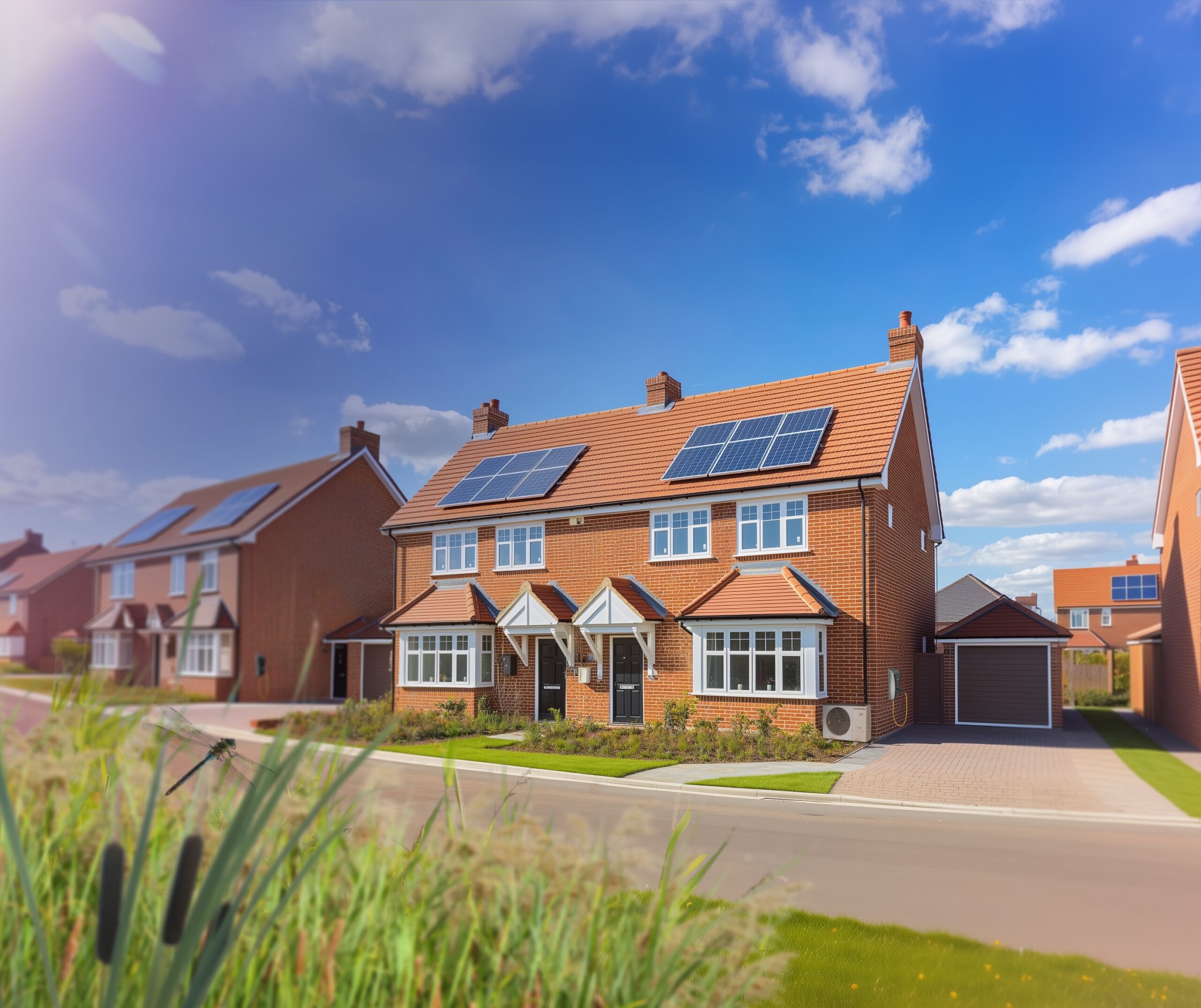Utilities don’t have to be a headache. They can generate value and be key to meeting sustainability targets. Since 2020, the utilities landscape has transformed significantly, moving from gas heating, introducing EV provisions and offering greater choice in water network adoption.
So how can developers turn mandatory obligations into opportunities to value-engineer networks and enhance social value?
Future Homes Standard
Developers’ obligations to make homes more efficient using a fabric-first approach and electric heating to ensure they’re zero-carbon ready has naturally driven widespread adoption of heat pumps.
Heat pumps are an efficient alternative to traditional gas boilers, effectively using power to generate the heat and hot water needed in homes. Homes built in line with the 2025 Future Homes Standard require significantly lower amounts of heat, reducing the additional power demand on heat pumps. This makes them a highly viable solution for most new developments.
ESP Utilities has been working closely with the industry to optimise and diversify demand. This collaboration allows developers to build networks efficiently,
make the most of the site’s available load, support low-carbon technology, and keep network costs down.
Photovoltaics (PV) and battery
Exporting energy on a network has always been a challenge for developers. However, the recent announcement by Ed Miliband introducing Solar Standards to spur a “rooftop revolution” means that more solar power will be installed and generated, requiring greater management within the development’s overall Point of Connection (POC) application.
ESP collaborate with developers to diversify the generated load and establish an export load lower than the total installed load. This approach helps reduce reinforcement costs and delays, potentially minimising the need for export controls on a development.
NAVs
Before Ofwat’s market review, the adoption of new homes was almost exclusively handled by incumbent providers. However, the introduction of competition has sparked innovation, benefiting developers. Design and Construction Guidance (DCG) for foul and surface water sewers was intended to be the standard for all water companies, but many incumbents demanded additional design considerations, adding cost and delay.
ESP embraces the simplicity and efficiency of a single set of adoption standards nationwide, adopting DCG, allowing deviations when there’s a valid engineering reason. This approach benefits developers by reducing costs and material requirements for sewer networks.
Early and phased vesting
ESP adopts spine sewers separately from the parcels they’re fed by, and independently from the pumping stations, often before any residential plots are connected. Additionally, sewer networks within parcels can be adopted earlier than the connection of 51% of the plots. This approach enables highways to release bonds sooner and allows for the earlier adoption of roads, freeing up capital for developments and reducing overall costs.
SuDS
BNG targets require developers to increase biodiversity within a redline boundary by 10% and maintain it for at least 30 years. Permanently wet Sustainable Drainage Systems (SuDS) can greatly support this goal, with the added benefit of reduced installation and maintenance risks if adopted by the NAV. Blue-green infrastructure can be designed to blend seamlessly with the environment, using natural-looking headwalls and concealed concrete as part of the overall design.
This approach creates spaces that mimic nature and supports community placemaking by creating natural focal points within developments. Additionally, SuDS features can be combined with Local Equipped Areas for Play (LEAP) to maximise developable land and ensure the community can benefit from open spaces.
Heat
District heat networks offer a viable solution for many developments. Due to the way they generate, distribute, and store heat, peak demand is lower compared to home-by-home heat pump solutions. Additionally, by drawing on the benefits of industrial heat pumps, the efficiency of centralised heat is usually higher, lowering the amount of energy needed throughout the lifecycle. District heat networks are becoming an increasingly attractive option for developers, as they offer value for money for both developers and end-consumers, while also providing the flexibility to adapt to evolving regulations.
No matter what challenges your site throws at you, ESP can find innovative, value-generating solutions. From adopting the entire site’s utilities needs to providing insight and advice, ESP offer comprehensive support to increase your asset value, honour environmental obligations and build vibrant, healthy communities.
To find out how ESP solutions can benefit your development, get in touch today.
